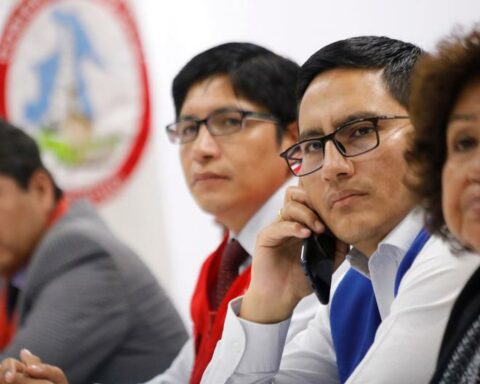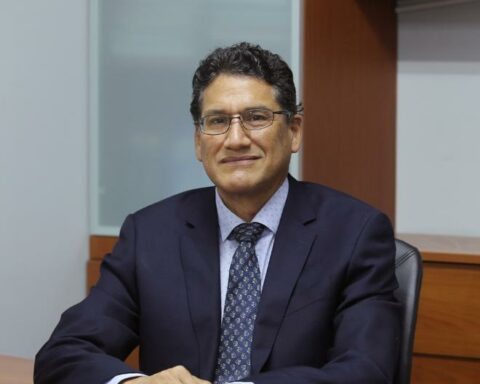doI will receive utilities? If I was on maternity leave, do I have to receive the extra payment? How can I calculate how much I will receive? These are some of the questions that workers ask themselves, given that in the next few days the payment of utilities should begin. Here we tell you everything.
MORE INFORMATION: What is the sanction for companies that do not comply with the payment of utilities?
The expected profits are a percentage of the net income (earnings after discounting investments and taxes) obtained by the companies as a result of their management. The Labor Frequently Asked Questions Manual of the Ministry of Labor and Labor Promotion (MTPE) resolves employee questions about this benefit.
WHAT DOES PROFIT SHARING CONSIST OF?
Profit sharing is a right recognized in article 29 of the Political Constitution of Peru, whose objective is for workers to access the net profits (if any) received by the employer as a result of their business management.
WHO RECEIVED THE PROFITS?
The workers who receive the profits are those who belong to companies that generate third category income and have more than 20 workers. Microenterprises accredited in the National Registry of Micro and Small Enterprises, it should be noted, are not required to share profits with their employees.
WHEN WILL THE PROFITS BE PAID THIS 2022?
The profits must be paid within a maximum period of 30 calendar days after the company submits its annual income tax return, according to the schedule established by Sunat.
This year the first expiration for the presentation of said declaration will be March 25, therefore, from March 26 the distribution will begin. The employer will provide you with a settlement sheet with information showing how the result you were paid for was arrived at. If a company fails to pay you within the specified period, you can report it to Sunafil.
WHAT IS THE PERCENTAGE OF DISTRIBUTION OF PROFITS BY SECTOR?
The applicable percentage depends on each sector. For example:
- Agricultural Companies: 5% between 2021 and 2023.
- Telecommunications companies: 10%
- Industrial Companies: 10%
- Mining companies: 8%
- Wholesale and retail trade companies and restaurants: 8%
- Companies that carry out other activities: 5%
WHAT COMPANIES ARE NOT OBLIGATED TO DISTRIBUTE PROFITS?
Self-managed, cooperative and communal companies, individual companies, civil societies, and in general all companies that do not exceed 20 workers, are exempt from distributing profits.
HOW IS THE NUMBER OF WORKERS OF A COMPANY DETERMINED?
To establish whether or not an employer exceeds the number of workers for the distribution of profits, the total number of workers who would have worked for him in each month of the corresponding fiscal year will be added and the total result will be divided by twelve. When the number of workers hired by the company varies in a month, the highest number will be taken into account, rounding to the next higher unit as long as the resulting fraction is equal to or greater than 0.5.
HOW IS THE DISTRIBUTION OF PROFITS FOR WORKERS CALCULATED?
What is distributed is a percentage that will depend on the activity. Hence, the determination of the amount to be distributed is carried out as follows:
- 50% based on days worked. Example: if it is determined that the working day generates 3 soles and you worked 180 days; it is multiplied and this part of your profits is equivalent to S/540.
- 50% based on the remuneration received by the worker: the amount of money to be distributed is divided by the sum of the salary of all the workers, this result is multiplied by everything you have earned in the year. Example: if the division is 0.02 cents and you have earned 27 thousand soles, they are multiplied and this part of your profits is also equal to 540 soles.
Both calculations are added and, according to the examples indicated, the total profit result is S/1,080.
SHOULD THE EMPLOYER DELIVER ANY DOCUMENT TO WORKERS WHO RECEIVE PROFITS?
The employer must submit a settlement sheet that must have the following information:
- Name or business name of the employer.
- Full name of the worker.
- Annual income of the company before taxes.
- Number of days worked by workers.
- Compensation of the worker considered for the calculation.
- Total number of days worked by all the employer’s workers entitled to receive profits.
- Total remuneration paid to all workers of the employer.
- Amount of the remainder generated by the worker, if applicable.
WHAT HAPPENS TO MY PROFITS IF I SUFFER A WORKPLACE ACCIDENT OR OCCUPATIONAL ILLNESS?
Workers who suffered an accident at work or an occupational disease are considered days of medical rest as effective days of work for the computation of profits. The medical leave must be accredited, under the protection and under the parameters of the occupational health and safety standard.
ARE EVERY REST DAY OUT OF THE PAYMENT OF UTILITIES?
For the calculation of profits, the days worked and those absences considered as assistance by legal mandate are taken into account, among which are:
- Days of absence due to the closing of the premises due to the commission of tax infractions.
- Union licenses.
- Days not worked due to null dismissal in case of replacement.
- Breastfeeding hours.
- Perfect suspension of work due to a fortuitous event or force majeure in the event that it has been declared inadmissible.
- The days of leave due to work accident or occupational disease.
- The days of pre and post natal leave.
IF I AM AN EX-WORKER, CAN I CHARGE PROFITS?
If you are an ex-worker you can collect profits. In this case, the amount is calculated, according to the days you worked, and the remuneration you received during the year that corresponds to the profits.








